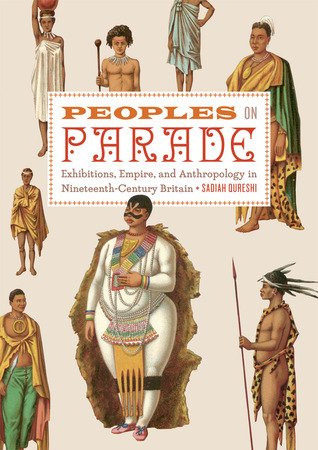What do you think?
Rate this book


392 pages, Hardcover
First published January 1, 2011
"It is worth being especially wary of employing color-based dichotomies. Whitenessand blackness are problematic terms of unification, because they can erase significant differences between the people of the same color, and they are historically contingent and contested categories. For example, most of the African peoples discussed were usually referred to as ethnically distinct peoples, such as the San, Zulu, or Ndebele, rather than black or African. Similarly, Britons were subdivided into may groups, including the Irish, Anglo-Saxon and Caledonian...
The broad consensus that exhibitions of living foreign peoples reinforced racist attitudes coupled with political investment has created histories that are both emotionally and politically potent. Anxieties that one might become complicit in displayed peoples' derogation or reenact and thereby contribute to the dissemination of racialist and voyeuristic views are both well founded and, one suspects, common. As such, it is likely, perhaps inevitable, that historians discussing the subject feel under pressure to appear to be resurrecting the shows as opportunities for further voyeuristic consumption or in order to denounce the shows as pseudoscientific entertainment. With such powerful responses in the fray, it is not difficult to see why many have taken the shows to be unproblematic icons of Western racist exploitation of foreign, often colonized, peoples. Prima facie, characterizing the practice of exhibiting foreign peoples as scientifically insignificant, racist spectacles may seem accurate and desirable. It certainly supports many contemporary notions of what constitutes acceptable entertainment and human treatment, consolidates the ostensible objectivity of scientific investigation, and is also amenable for certain political ends. It is not difficult to empathize with this use or the political commitments of those who, quite rightly, support campaigns against continuing racist oppression and modern forms of cultural imperialism, and seek recompense for past wrongs. Nonetheless, it is worth being more critical of the criteria currently used to establish displayed peoples; status within these prjects; otherwise, these people risk being reestablished as freaks renamed as cultural icons. All too often, the arguments that individuals such as Baartman or Tambo are iconic of historically marginalized communities have been premised on problematic arguments, such as color was central to the ascription of ethnic difference; historically there was a single image of the "black," "savage," or "other" operating; and displayed peoples were interpreted as typologically representative of this image. However, as discussed, suggestions that living foreign peoples were uniformly interpreted as "freaks" or "others" or within the context of imperialist nationalism are worth revising.
[This book] has sought to avoid simply adding the shows to an already long list of examples of endemic nineteenth-century racism; rather, it has suggested that more compelling accounts are needed of how the association between displayed peoples and human variety was created and maintained. Highlighting limitations in some of the criteria currently used to conceptualize displayed peoples; histories is not intended to imply that they cannot or should not be politicized. Rather, it is to suggest that being more critically reflexive about the contingency of common analytical terms, such as race, science, entertainment, or even human offers the option of a far more powerful and contextually sensitive basis for the ascription of modern political significance."